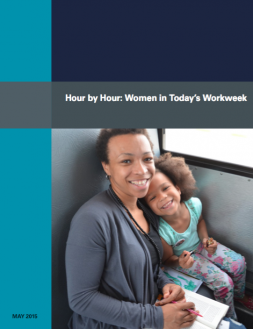Hour by Hour: Women in Today’s Workweek
Summary
Nationwide, more than 38 million women work in hourly jobs. Most women, and most Americans, are paid by the hour, yet today’s workweek is changing—the 40 hour workweek and the 8-hour day are no longer the norm for a significant part of this workforce.
Our nation’s workplace protections are badly out of sync with the needs of today’s working families and we need policies that provide everyone an opportunity to get ahead. Particularly, labor standards have not kept up with rapid changes to the fastest growing industries like retail, healthcare, and food service. Part-time workers in the service sector—overwhelmingly women—have borne the greatest burden of these new just-intime scheduling practices, which have largely gone unregulated. But what begins in these sectors will soon spread, as the distinctions between part-time and full-time work grow increasingly blurred, and more and more Americans experience work hour instability and economic uncertainty.
Women − over a third of whom work part-time in order to juggle economic survival, family responsibilities, and advancing their careers − are at the greatest risk of being further marginalized in the workforce if unsustainable scheduling practices on the part of employers go unchecked. As we seek to create family-sustaining jobs in the burgeoning service sector, we must also consider scheduling practices in low-wage employment. Without an update to labor standards for these workers, more and more workers across the economy will be subject to this type of extreme economic uncertainty. New policies that ensure predictable schedules, give employees a voice in their schedules, ensure quality part-time employment and access to stable, full-time schedules will improve the lives of working people in general and especially benefit working women and mothers.













